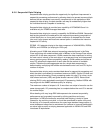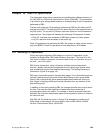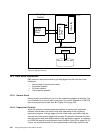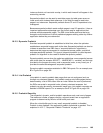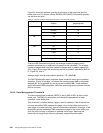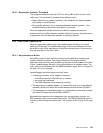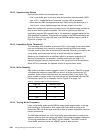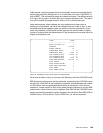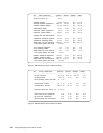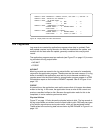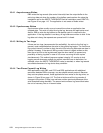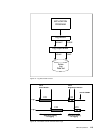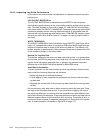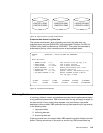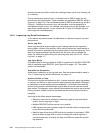
DB2 I/O Operations 109
Table spaces containing pages which are frequently reread and updated should
have a high threshold, placing them in a virtual buffer pool with a high DWQT, or
high VDWQT. This ensures that pages are reused in storage. The reference value
J in Figure 35 on page 110 shows the rate of updates per each write. The higher
this rate, the better the page reuse for write is in this virtual buffer pool.
Large table spaces, where updates are very scattered and page reuse is
infrequent or improbable, can have their threshold set low, even to zero. A zero
threshold means that updated pages are written to disk very frequently. In this
case, the probability of finding the update page still on the disk cache is higher
(cache hit) helping with disk performance. A low threshold also reduces the write
impact at checkpoint time.
Figure 33. DB2PM Accounting Trace Buffer Pool Report Extract
Care must be taken if trying to tune the write efficiency with the LOGLOAD value.
DB2 checkpoint performance can be adversely impacted by the LOGLOAD value
set too high. LOGLOAD is the installation parameter that establishes the number
of LOG control intervals generated before taking a checkpoint. If this value is
excessive, a large amount of disk writing takes place at checkpoint, and the DB2
restart time in case of failure is also impacted. With DB2 V6 the LOGLOAD value
can be dynamically changed to reflect changes in the workload. See
DB2 UDB for
OS/390 Version 6 Performance Topics
, SG24-5351, for more information.
TOT4K TOTAL
--------------------- --------
BPOOL HIT RATIO (%) 2
GETPAGES 6135875
BUFFER UPDATES 48
SYNCHRONOUS WRITE 0 F
SYNCHRONOUS READ 19559 A
SEQ. PREFETCH REQS 164649 B
LIST PREFETCH REQS 0 C
DYN. PREFETCH REQS 26065 D
PAGES READ ASYNCHR. 5943947 E
HPOOL WRITES 0
HPOOL WRITES-FAILED 0
PAGES READ ASYN-HPOOL 0
HPOOL READS 0
HPOOL READS-FAILED 0



